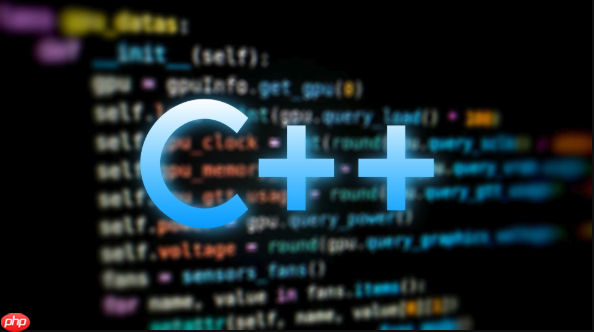C++中格式化输出字符串有多种方法:①使用std::cout与<<操作符,适合简单拼接;②C++20引入std::format,类型安全且功能强大;③sprintf/snprintf为C风格,需防缓冲区溢出;④ostringstream适用于复杂拼接场景。应根据项目需求选择合适方式。

在C++中格式化输出字符串,有多种方式可以实现,每种方法各有特点,适用于不同场景。下面介绍几种常用的字符串格式化输出技巧,帮助你更灵活地处理输出内容。
这是最基础也是最常见的输出方式,适合简单拼接和输出变量。
示例:
#include <iostream>
#include <string>
int main() {
std::string name = "Alice";
int age = 25;
std::cout << "Name: " << name << ", Age: " << age << std::endl;
return 0;
}
C++20 引入了 std::format,语法类似 Python 的 format,是现代 C++ 推荐的方式。
立即学习“C++免费学习笔记(深入)”;
示例:
#include <format>
#include <iostream>
int main() {
std::string name = "Bob";
double score = 98.6;
std::cout << std::format("Student: {}, Score: {:.1f}\n", name, score);
return 0;
}
适用于需要精确控制字符数组的场景,但需注意缓冲区溢出风险。
示例:
#include <cstdio>
#include <iostream>
int main() {
char buffer[256];
int value = 42;
std::snprintf(buffer, sizeof(buffer), "Value: %d, PI: %.2f", value, 3.14159);
std::cout << buffer << std::endl;
return 0;
}
当输出逻辑较复杂,涉及条件拼接或循环时,std::ostringstream 更加灵活。
示例:
#include <iostream>
#include <sstream>
#include <vector>
int main() {
std::ostringstream oss;
std::vector<int> nums = {1, 2, 3, 4, 5};
oss << "Numbers: ";
for (int n : nums) {
oss << n << " ";
}
std::cout << oss.str() << std::endl;
return 0;
}
基本上就这些常用方法。如果用的是 C++20,优先考虑 std::format;否则 ostringstream 和 cout 结合已经足够强大。避免滥用 sprintf,除非确实需要对接 C 接口。关键是根据项目环境和需求选择最合适的方式。

c++怎么学习?c++怎么入门?c++在哪学?c++怎么学才快?不用担心,这里为大家提供了c++速学教程(入门到精通),有需要的小伙伴保存下载就能学习啦!

Copyright 2014-2025 https://www.php.cn/ All Rights Reserved | php.cn | 湘ICP备2023035733号